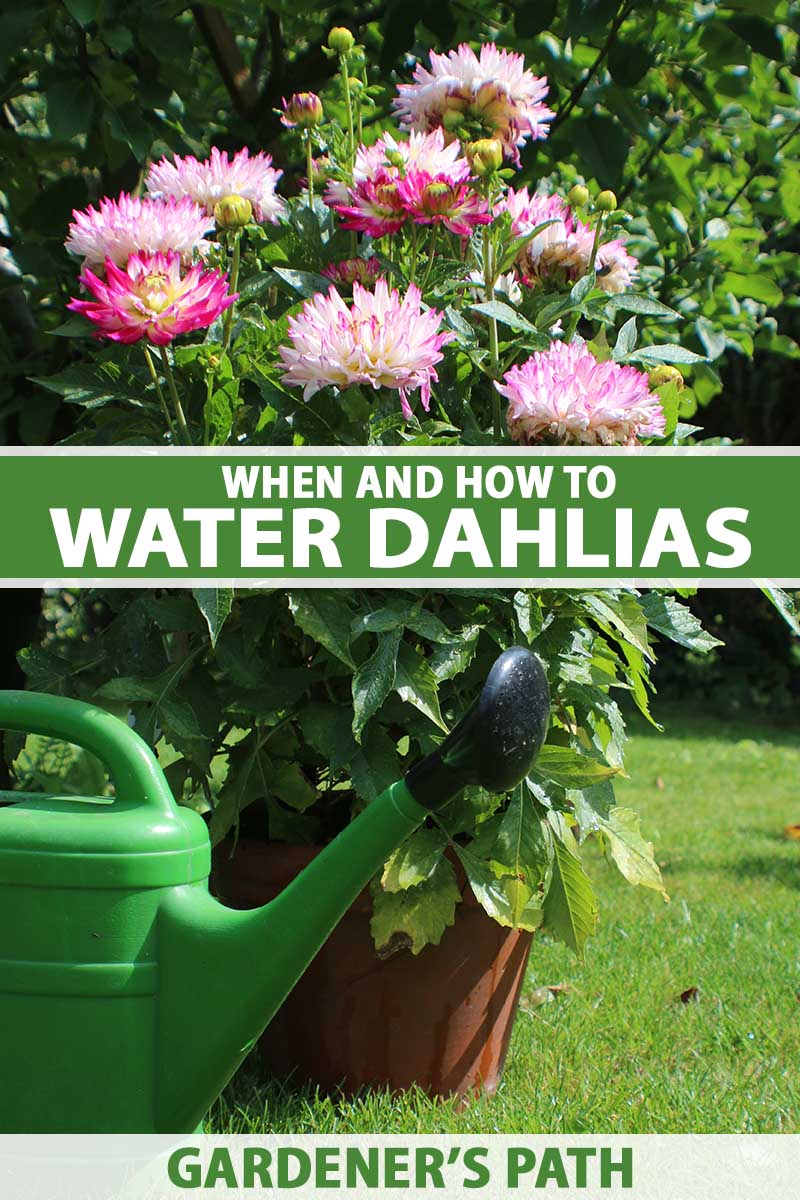Dahlias, Dahlia spp., are tuberous, tender perennials suitable for cultivation in USDA Hardiness Zones 8 to 11.
In other Zones, they grow as annuals that require lifting at season’s end and storage through the winter.
Their cultural requirements include a full sun location, ample moisture, and loose, fertile, well-draining soil.
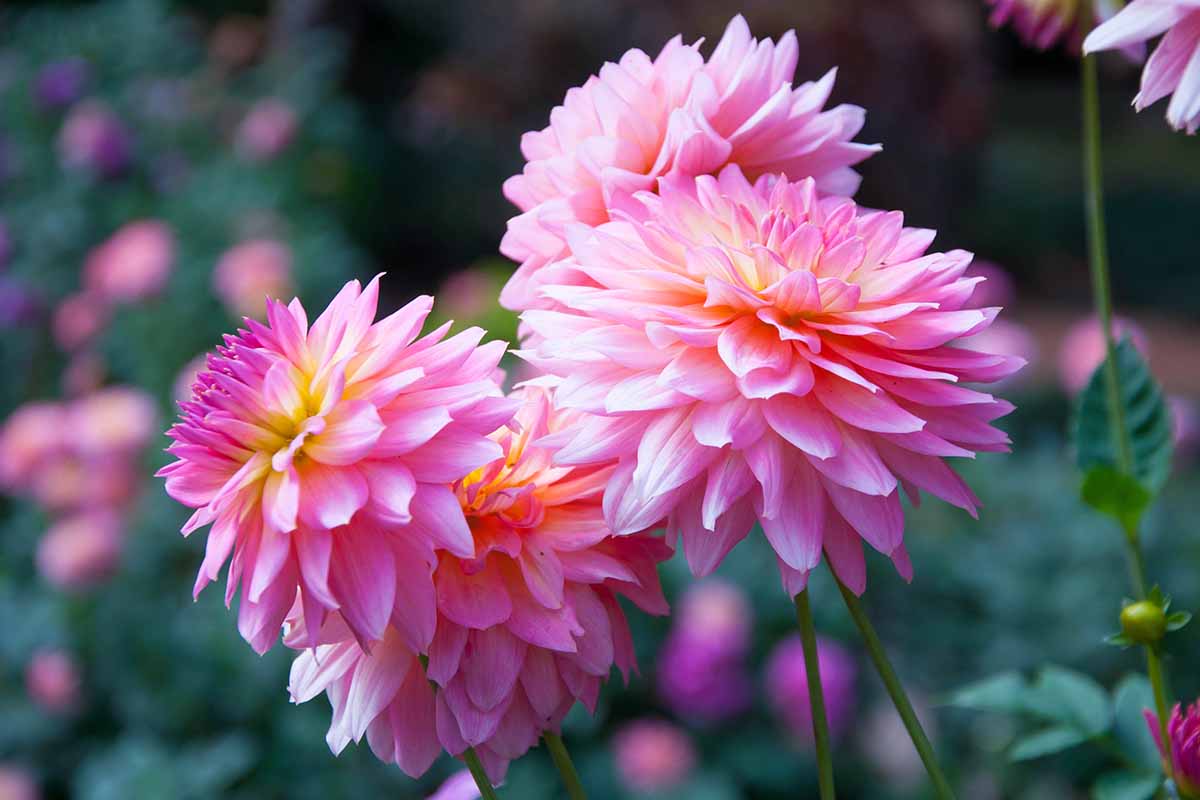

We link to vendors to help you find relevant products. If you buy from one of our links, we may earn a commission.
Our guide to growing dahlias has all you need to know to establish and care for plants in your outdoor living space.
This article focuses on one of the most important aspects of caring for these plants: watering.
Here’s what we’ll cover:
Let’s get started!
Breaking Dormancy
The life cycle of a dahlia begins with a tuber, a self-contained, bulb-like root structure resembling a potato.
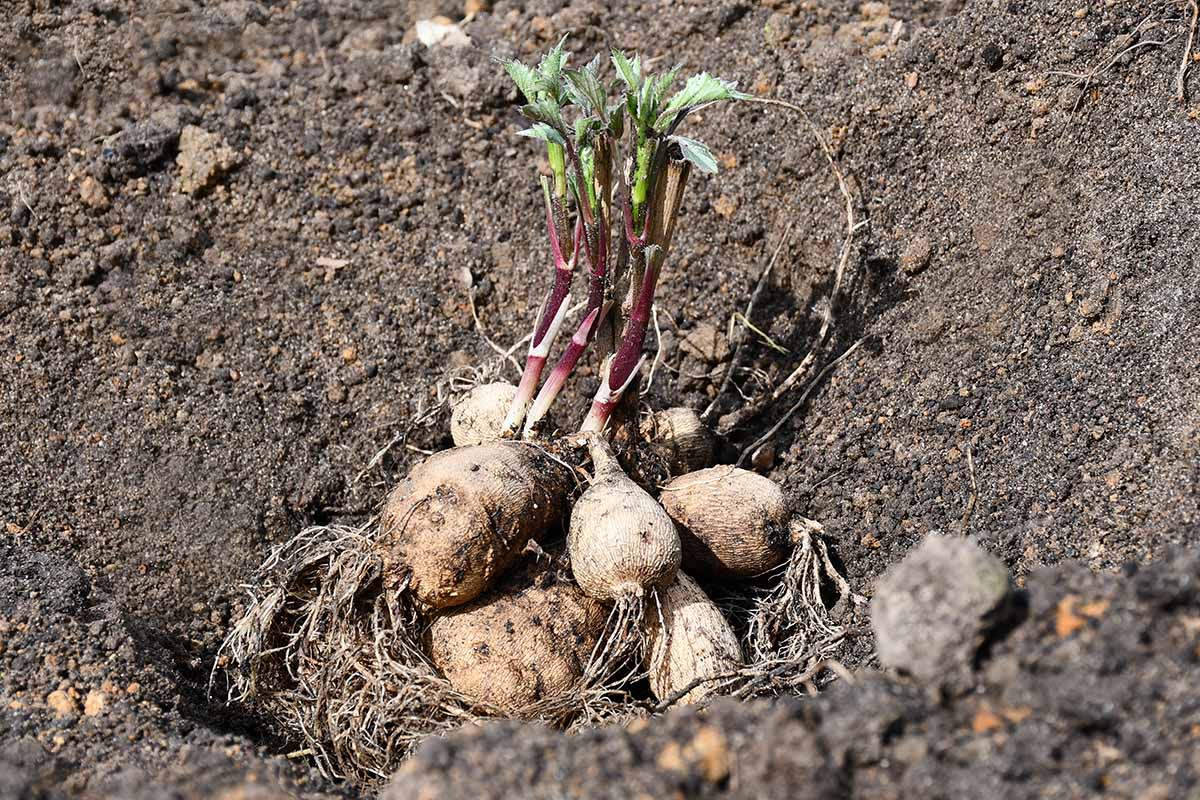

During the winter months, tubers are dormant, resting either in soil in the garden or in cold storage in cooler zones.
These structures contain all the energy needed to sprout.
In areas with spring rain, tubers sprout when the air warms and the soil is moist.
Gardeners in dry regions should moisten the earth until it is damp to simulate nature’s reawakening and continue to keep it evenly moist but not wet through the sprouting period.
Once the first green leaves appear, the gardener’s job becomes one of constant vigilance and judgment.
Routine Hydration
The production of fresh foliage indicates that the roots are actively nourishing and hydrating the plant.
From when the tubers first sprout through the end of the growing season, you’ll need to water just enough to keep the soil damp but never oversaturated.
Excess wetness and waterlogged soil causes the tubers to rot.
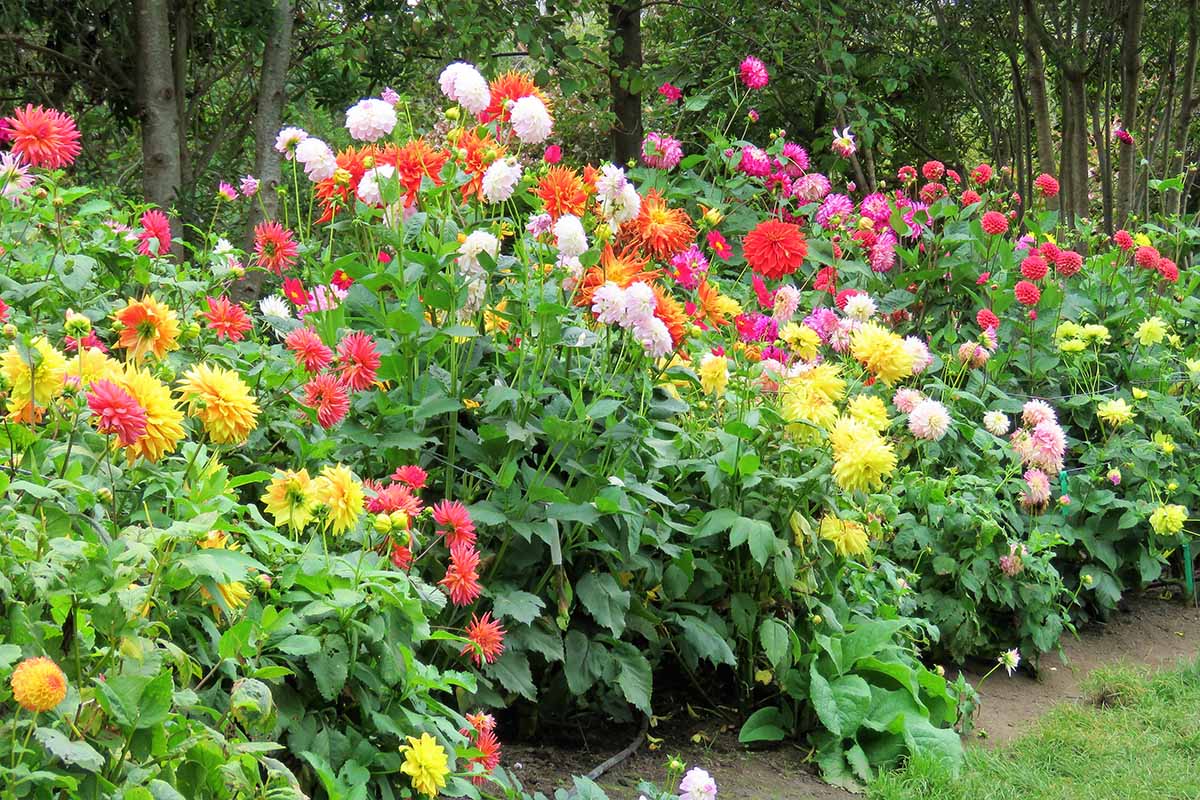

Dahlia varieties range from dwarf cultivars with petite one-inch blossoms to behemoth dinner-plate-sized blooms atop five-foot stalks.
The larger the specimen the deeper the roots, and so the plants have a greater need for water. Use a moisture meter as your guide and hydrate when the top inch of earth is dry.
These plants require deep soaking when you water them.
The best time to do so is in the morning before the day heats up; aiming the hose at the soil level delivers moisture to the roots and avoids wetting the foliage which can lead to fungal issues.
Plants require greater quantities of water as they grow more foliage, buds, and blooms.
In areas where rainfall is not likely to be enough to sustain the foliar development and blooming of garden flora, use a moisture meter and soaker hose irrigation system to hydrate slowly and evenly several times a week.
The great challenge is that, unlike a container that drains, garden soil may become oversaturated, causing water to pool and tubers to rot.
Consider adding a two- to three-inch layer of loose mulch around, but not touching, the stems to aid in moisture retention and facilitate drainage.
If you’re growing your dahlias in containers, be aware that they dry out faster than the ground.
For potted specimens, use a moisture-retentive medium that drains well, a vessel with an ample drainage hole, and irrigate with a watering can.
Check pots daily, soak them once or twice a day during summer’s peak heat, and remove the saucers below to ensure the excess water drains away.
Additional Water Applications
In addition to breaking dormancy and routine hydration, you may need to supply supplemental water when transplanting, treating for pests, during times of extreme heat, and winterizing.
Transplanting
Spring is the time to transplant your overwintered tubers into the garden. Moisten the soil lightly to avoid rotting the tubers.
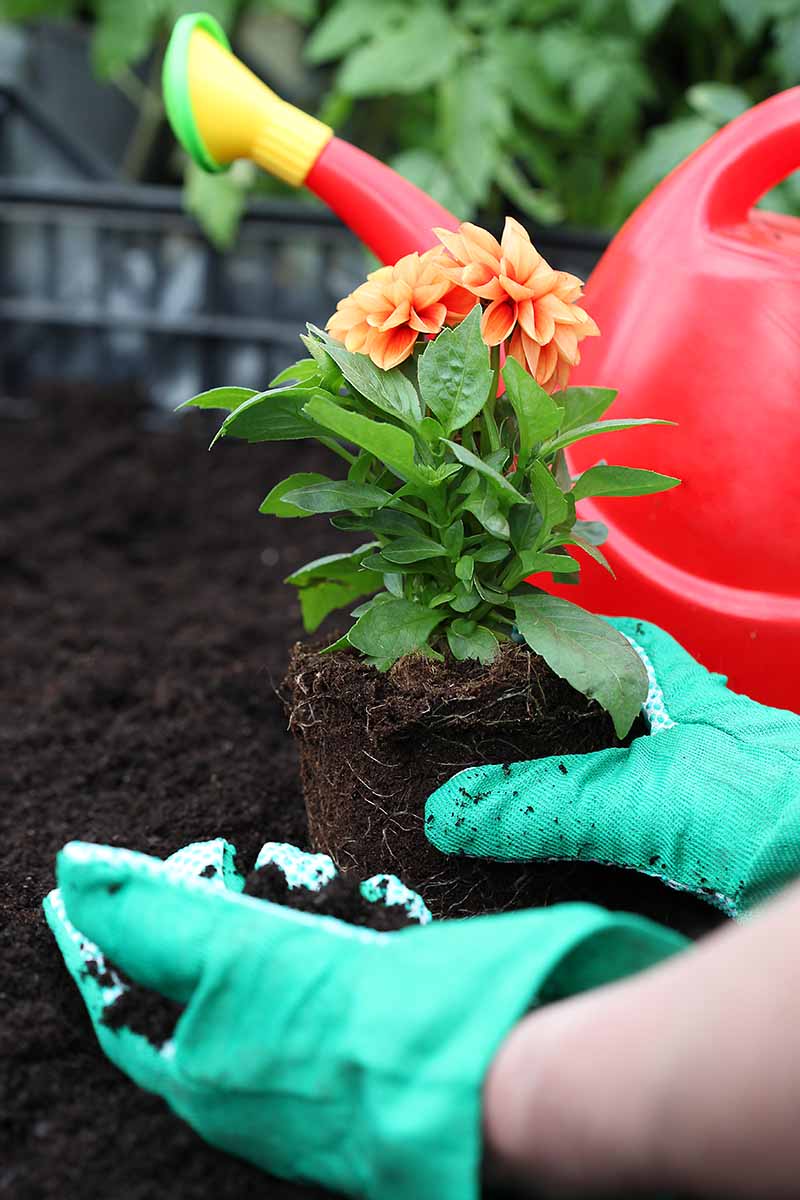

Use a moisture meter or your finger to judge when the top inch of soil is dry and hydrate regularly for the rest of the growing season.
Treating for Pests
Dahlias are prone to infestations of aphids, mites, and thrips, sapsuckers most prevalent in dry conditions. Keeping your plants hydrated increases their resistance to such pests.
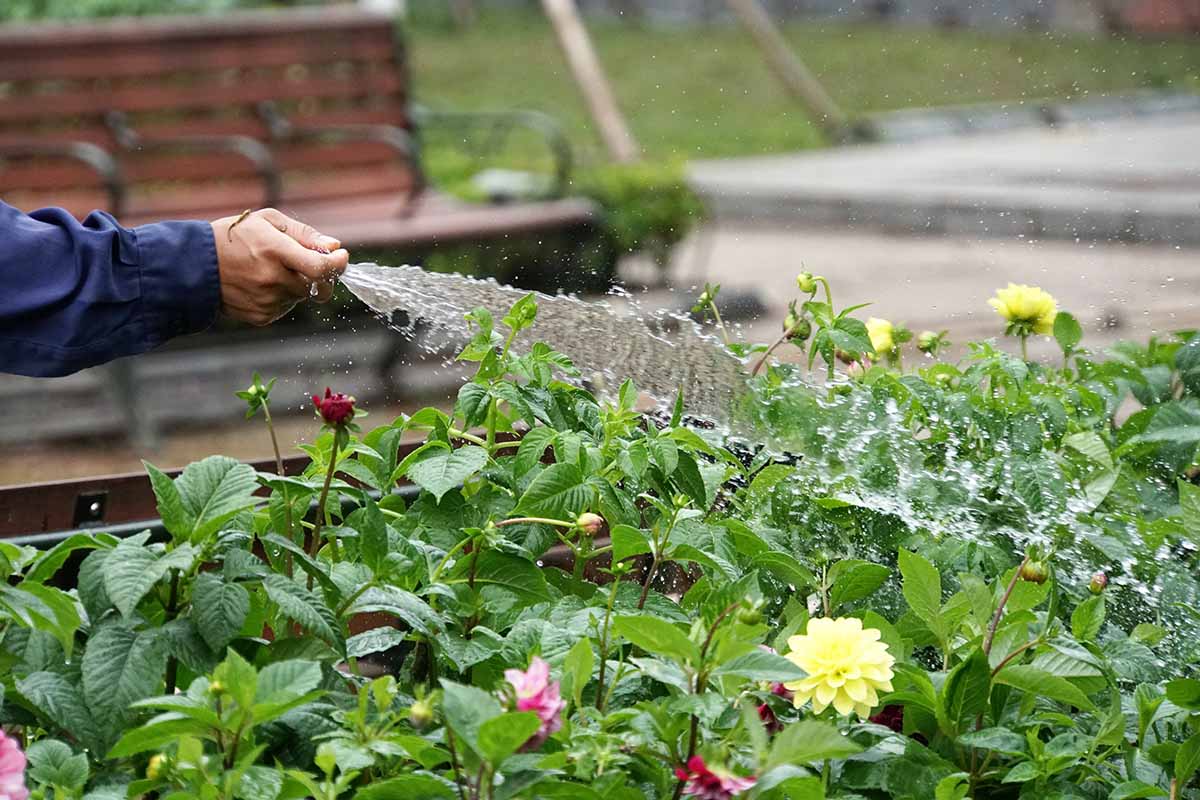

You can also use a firm spray of the hose to dislodge visible insects.
Hose early in the day to prevent the foliage from remaining wet for long periods and reduce susceptibility to fungal diseases like powdery mildew.
Learn more about dahlia pests and how to deal with them in our guide.
Extreme Heat
Even after morning watering, during hot weather the foliage may wilt on an oppressive summer afternoon.
Use the mist setting on your hose and lightly spray the foliage. With the mercury at 90 to 100°F, the heat immediately evaporates the moisture and cools the leaves.
Winterizing
If you live outside Zones 8 to 11, or your region is especially wet, you’ll need to lift and store your tubers for the winter.


After digging them up at season’s end, rinse the tubers with a hose and let them air dry in the sun before packing them away in paper bags in a cool, dark, dry, rodent-free location.
You don’t need to give the tubers any water during the winter months while they are in storage.
Dahlia Divas
Successful growers learn early on that catering to moisture needs on a daily basis is the secret to exquisite blooms. They thrive on the challenge and revel in the rewards.
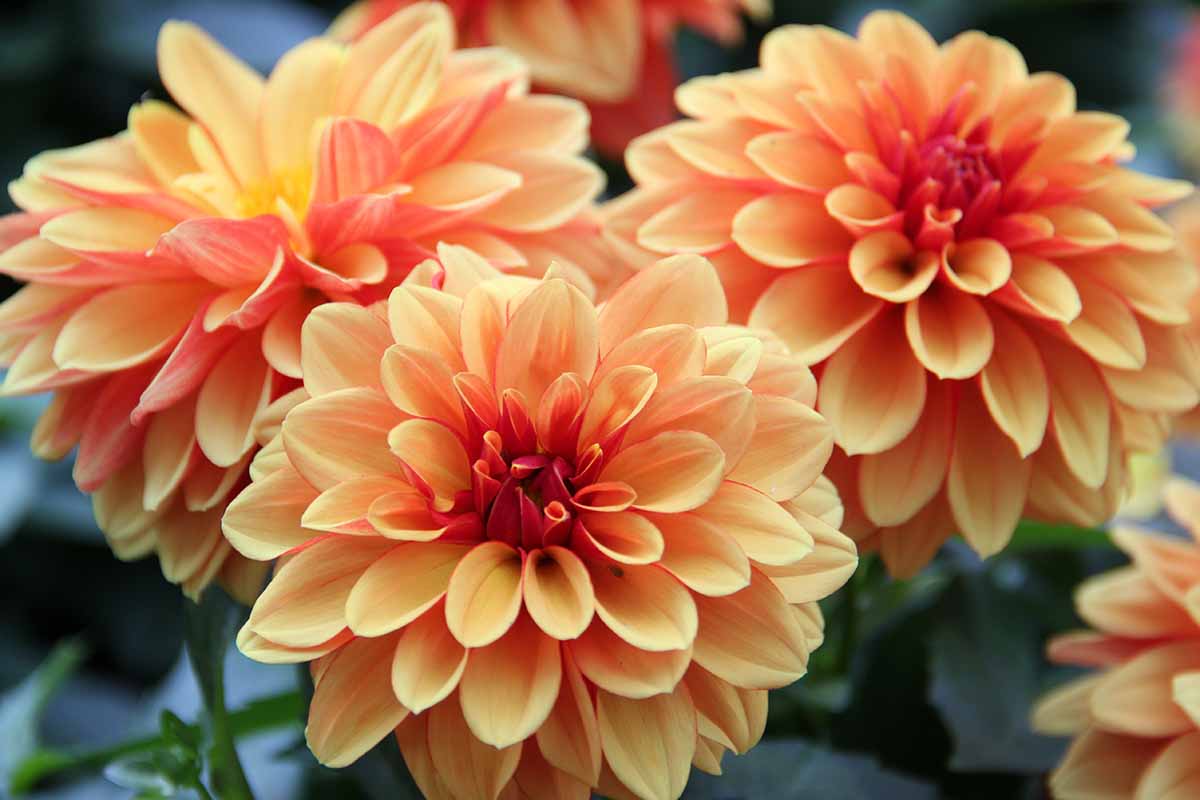

If the idea of soaker hoses and judging ground moisture seems daunting, consider growing dwarf varieties in containers.
You’ll need to water more often but are less likely to err on the side of oversaturation if you use a moisture meter, moisture-retentive, well-draining growing medium, and ensure your pots have drainage holes.
How do your dahlias grow? Share your experience in the comments section below.
If you found this article informative and want to read more about growing dahlias, we recommend the following:


